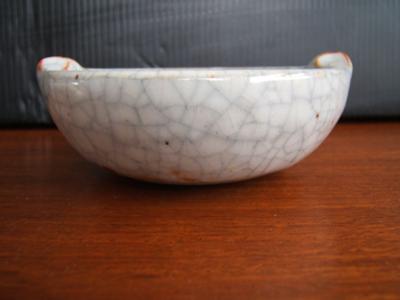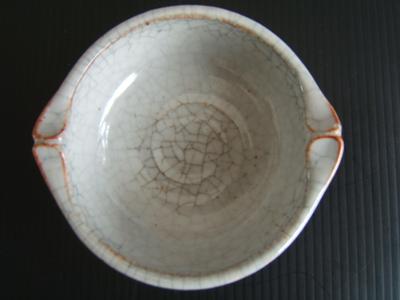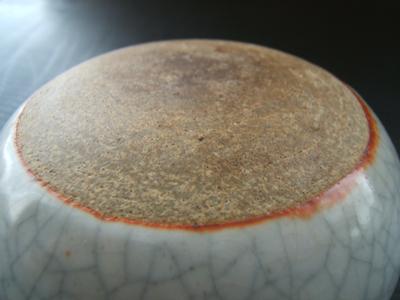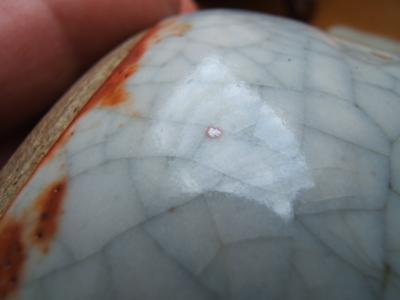WOULD REALLY APPRECIATE YOUR COMMENTS ON THIS ONE PETER!
by Andrew




Hello again Peter,
I think you are doing a terrific job in assisting the many of thousands of people who want to know more about what they have...you advice is invaluable, thank you again.
I came across this very small unassuming bowl, which was for sale, rather by accident,as it was grouped with other modern crockery in a shop.
The price was a pittance, perhaps reflecting it's assumed unimportance,but I bought it anyway & on the long 5 hour drive back home from hospital I started to think about this little piece & wondered could it really be a genuine piece of GUAN-type ceramic produced all those years ago, by the ancient potters.
I don't think I could be that lucky! because these types of pieces are RARE, if not more than likely a REPRODUCTION.
I would greatly appreciate if you could help me to know when this piece might have been made,considering the piece has no discernable foot!..very unusual & unlike any other images of similar type glazed ware I have encountered on the web.
I know that REPROS are getting so much better, but I am puzzled with making a determination on this one as I have not been able to see, eyes on at least, on a real GUAN -TYPE specimen from the Northern districts, late Song Dynasty, or from the more numerous ware from the later Southern districts.
Anyway, heres a layman's description of the glaze type on my piece.
Under a 10 x loop the glaze is thick,highly opaque ,white/grey in colour & has a sparse, generally even scattering, of larger isolated gas bubbles near the glaze surface & numerous black spots & blips visible at various depths in the glaze.
The surface of the glaze appears to be highly compact with a ripple type, of orange peel texture with a smooth semi gloss lustre in light, spotted liberally with silvery black spots & moon eye craters on the surface.
The crackling appears induced & coloured with a black fading to grey, being the only colour.
The glaze edges & high areas of the piece appear to have a visible iron red staining, which is not affected by an acetone scrub.
The bowl has an old age crack running up one side,which appears yellowed & the bowl leaks a little water somewhere from underneath, but the exit crack is not visible with my loop.
The bowl is conical with a flat smooth footless base.
The paste is stoneware with some coarse grit,but I am not able to deduce the thickness of the stoneware accurately,however, the side walls & base seem uniform in throwing thickness so I measured the side wall to be approximately 5 mm.s thick with the total glaze encasement....whether this stoneware can be regarded as thickly or thinly potted, I have no idea,but read somewhere that it might be important to id in dating authentic period pieces.
The interior of the base has an obvious ridged spiral, perhaps made by the potter's finger.
Could this piece be a brush pot?
Would love some more of your knowledge & observations.
regards,Andrew.








